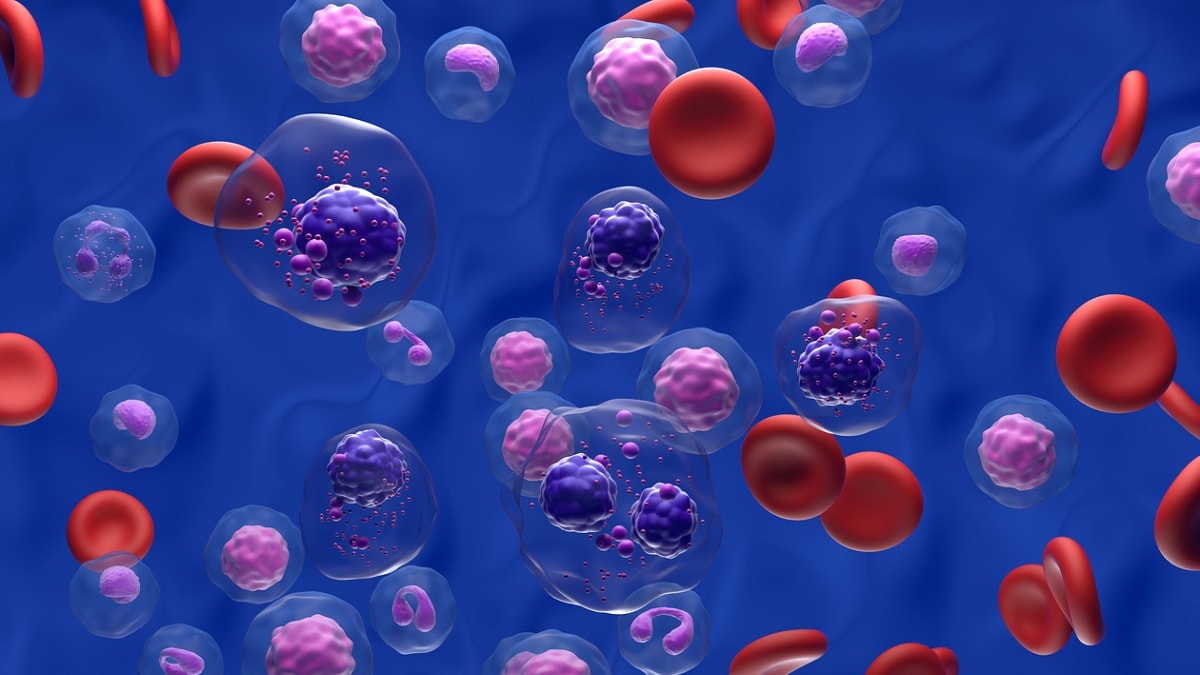Key points
- Myeloma, also called multiple myeloma, is a cancer of the plasma cells.
- Plasma cells are white blood cells that make antibodies that protect us from infection.
- Scientists don't understand why some people get myeloma.

Overview
Myeloma, also called multiple myeloma, is a cancer of the plasma cells. Plasma cells are white blood cells that make antibodies that protect us from infection. In myeloma, the cells grow too much, crowding out normal cells in the bone marrow that make red blood cells, platelets, and other white blood cells.
- Multiple myeloma, the most common type of plasma cell tumor, develops in the bone marrow and can spread throughout the body.
- Solitary plasmacytoma is a single plasma cell tumor that develops in one part of the body, often in a bone.
- Extramedullary plasmacytoma is a plasma cell tumor that develops outside of the bones in soft tissue, such as the lung or throat.

© 2014 Terese Winslow LLC. US government has certain rights. Used with permission. Contact artist at www.teresewinslow.com for licensing.
Symptoms
Sometimes myeloma does not cause any symptoms. It may be found when a blood or urine test is done for another condition, and a higher than normal level of protein is found. When myeloma is more advanced, symptoms may include:
- Bone pain, especially in the back or ribs.
- Bones that break easily.
- Fever for no known reason.
- Frequent infections.
- Bruising or bleeding easily.
- Trouble breathing.
- Weakness of the arms or legs.
- Feeling very tired.
These symptoms can also come from other conditions. If you have any of these symptoms, talk to your doctor.
Causes
Scientists don't understand why some people get myeloma and others don't. Age is the most significant risk factor for developing myeloma. People younger than 45 years old rarely develop the disease. Men are more likely than women to develop myeloma, and myeloma is more than twice as common among Black people as among White people. In rare cases, exposure to x-rays or other kinds of ionizing radiation may be a risk factor for developing myeloma. Being overweight and having obesity are linked with a higher risk of getting multiple myeloma.
Statistics
The Data Visualizations tool makes it easy for anyone to explore and use the latest official federal government cancer data from United States Cancer Statistics. It includes the latest cancer data covering the US population.
- Cancer Statistics At a Glance: See rates or numbers of new myelomas or myeloma deaths for the entire United States and individual states. Also, see the top 10 cancers for men and women.
- Cancers by Age, Sex, Race, and Ethnicity: See rates or numbers of new myelomas or myeloma deaths by race and ethnicity, sex, and age group.
- Trends: See how the rates of new myelomas or myeloma deaths changed over time for the entire United States and individual states.
Resources
- Plasma Cell Neoplasms (Including Multiple Myeloma) (National Cancer Institute)
- Multiple Myeloma (Medline Plus)
- Multiple Myeloma (American Cancer Society)
- Myeloma Overview (Leukemia & Lymphoma Society)
- Understanding Multiple Myeloma (Multiple Myeloma Research Foundation)
